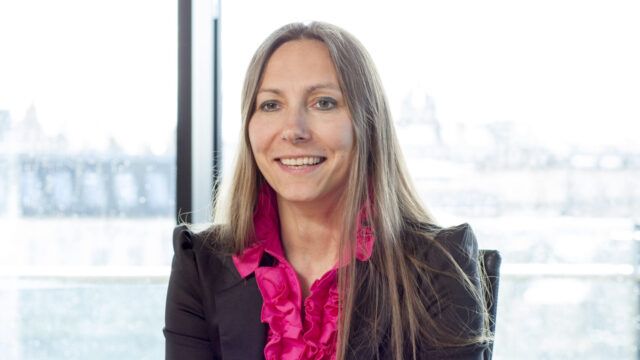The last 12 months or so have been particularly volatile for investors. How has that impacted your approach to investing and are there any areas within healthcare that have proved to be more resilient than expected?
The last 12 months have been challenging for investors, with the recent headwinds of a type not seen for many years, driving increased uncertainty in equity markets. Indeed, there are very few long-term investors in healthcare, exacerbating the myopic movement of capital in response to short-term news cycles. In these conditions, we have two important jobs to do. Firstly, we must assure ourselves as to the fundamental resilience of every business in which we invest. Specifically, there has been an aversion to companies that need further capital for growth, so balance sheet strength has been a key focus of ours this year.
Secondly, we must be open to fresh long-term opportunities created by recent share price falls. Our general view is that the biotech sector and the broader healthcare sector have been oversold by the market in the last 12 months. For instance, the market is not differentiating between traditional single project biotech companies and those creating platforms. We think the current share prices of the companies in our portfolio do not reflect the long-term value of these exceptional businesses that are driving industry paradigm shifts. Furthermore, we believe the structural tailwinds behind our companies will persist, despite a more challenging macro backdrop.
The world continues to change and real progress is being made across the full value chain of healthcare. We are moving to a world where drugs will be more specific, biology will become engineerable and personalised medicine will become a reality. These are substantial opportunities for growth investors.
Which areas of healthcare technology do you expect to see the biggest growth in investment over the next five years? How is Baillie Gifford trying to support these companies working with cutting-edge technology?
The process of discovering and developing drugs remains hugely inefficient. Historically, developing a drug would, on average, take 10 years and cost more than $1bn, with failure rates exceeding 90%. Moreover, the learnings that could be transferred from the making of one drug to the next were very limited. This created a high stakes incentive system, where drug pricing models reflect maximising returns on considerable R&D costs.
However, enabled by tools that capture increasingly granular biological data, not only are companies starting to transfer learnings from the development of one drug to the next, but with the help of AI, they are beginning to automate the process of learning itself.
These new techniques let us go after diseases that were previously undruggable and usher a new era of personalised medicine. Science fiction is becoming reality; new modalities like mRNA, RNAi and CRISPR will allow us to reprogramme our biology, turning our cells into the drug factories by working with nature rather than against it. A new breed of smaller, agile, tech style companies have the scientific ammunition to shift the status quo and to produce new medicines exponentially faster, and that are more effective and at a lower cost to the patient.
Against a background of increasing innovation, investors can play a critical role in the incentive systems for healthcare companies. Short-term investors may encourage management to set high prices with frequent increases to maximise near-term profits. In contrast, supportive long-term, patient capital can encourage companies to expand opportunities by investing in teams, technology and science. We aim to hold companies for at least five years, supporting companies through our engagement, as demonstrated recently by our voting with Moderna against a motion to transfer the company’s IP. We believed opposing this resolution will help the company to focus on primary issues including Covid-19 and its broader pipeline. Finally, we provide direct capital to businesses when needed, as demonstrated by our provision of capital to medical device company Ambu this year.
How do you look to strike a balance in your portfolio between investing in companies that are early stage with huge potential to grow and later stage companies that can generate more consistent revenue growth?
This is not just another healthcare sector strategy. This is a thematic portfolio where we’re aiming to tap into opportunities across the whole spectrum of healthcare, spanning companies that are advancing 1) understanding of diseases, 2) diagnostics, 3) treatments, 4) prevention and 5) operational efficiency of healthcare systems. We’re looking for problem solving companies that have long runways for growth.
For us, idea generation is a multi-faceted process and we believe the best way to generate ideas is to follow our interests and embrace serendipity. We spend a lot of time thinking about challenges in each of the five areas above, as well as exploring how an ideal healthcare model might look in the future. We ask ourselves for example, “what might a cure for cancer look like?”, or “how might progress in genome sequencing impact healthcare?”. While acknowledging we do not (and cannot) have all the answers, these visions of the future evolve continuously through conversations with our network of thought leaders and both public and private companies. More importantly, these mental frameworks help us to narrow our focus to align with potentially unique and transformational companies early on in their development.
The Covid-19 pandemic has significantly changed how medical services are delivered, particularly with the rise in telemedicine. What other changes in healthcare have you seen following the pandemic and do you think they will remain in place?
The Covid-19 pandemic upended many norms. It demonstrated to the world that a drug’s development could progress through regulatory review at a rapid pace. Technology directed against the virus also showed the world that it was possible to analyse disease and develop effective barriers to this at unprecedented speed.
Moderna’s Covid vaccine is a high-profile example, but less known perhaps is Moderna’s use of AI in this process. In developing its Covid treatment, the company used AI to optimise designs of its novel mRNA constructs, essentially the set of instructions that teach our bodies how to protect themselves against the virus. In addition, it used AI to automate quality control, reducing the need for manual checks when speed was of the essence.
AI drug development is also helping to make existing techniques more accurate, effective and tailored, reinvigorating fields such as small molecule oncology. For example, Exscientia, a company we invested in at IPO in 2021, has a pipeline of over 25 drugs, making it closer in scale to a large pharma company than early-stage biotech. This pipeline includes the first three AI-designed drug candidates to enter phase 1 clinical trials.
AI-designed, tailor-made, targeted medicines offer more chances at cancer treatment breakthroughs. A future of medicine built for the individual is therefore possible. With the pace of progress, efficiency and scale that AI brings, scientists could use it to revolutionise how drugs are designed and discovered within our investment horizon.
How do you look to integrate ESG and impact investing into your health innovation strategy and ensure that the companies you are investing in meet the proper standards?
Health Innovation aims to invest in companies that have the potential to bring substantial improvements to human health and healthcare systems. We seek to invest in companies that are striving to identify the underlying causes of diseases and aiming to address unmet needs in the healthcare area. In addition, we analyse a company’s ability to democratise access to healthcare solutions. We seek to invest in companies that provide efficient/precise cost-saving tools, which in turn will directly and positively improve access to healthcare solutions to more people, everywhere. We also analyse how companies engage with patients and look for evidence that a company is addressing patient problems in a thoughtful way.
In light of this, the consideration of sustainable investment factors is integral to our investment process, both before investment and through ongoing monitoring, in the form of ESG-focused investment research and targeted company engagement. The strategy also benefits from the insights and knowledge provided by our two dedicated Health Innovation impact analysts who work closely alongside the investment managers.
Our research framework aims to identify companies that are developing technologies that meaningfully improve health outcomes for large segments of the population and the overarching goal of our impact approach is to encourage companies to push the boundaries when it comes to solving significant global challenges. As a long-term investor providing patient capital, we play a crucial role in encouraging and supporting companies to expand opportunities by investing in innovation. This enables companies to be more ambitious, increasing the potential scale of success and, with it, the chances of becoming one of those rare and valuable companies that can generate significant returns – for society and for investors.

















